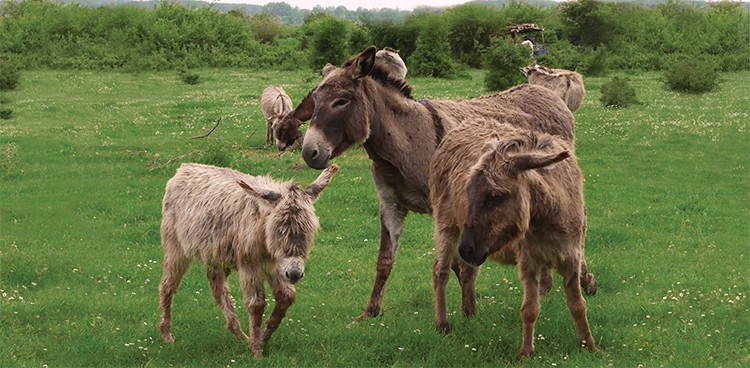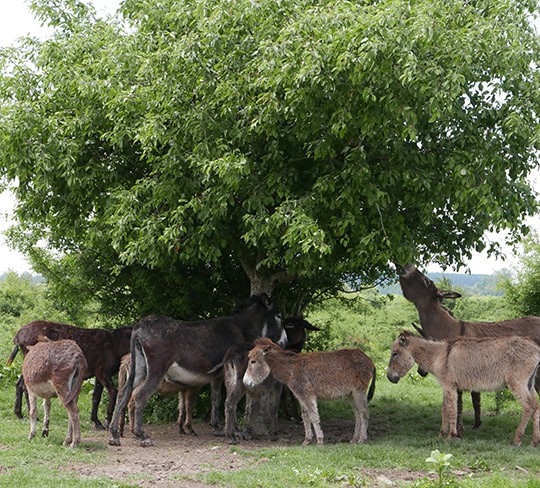
Throughout history, donkeys have helped humans with agriculture and transportation—especially on the Balkan Peninsula, home to more than 70 percent of Europe’s donkey population. Perhaps one of the best-known breeds is Serbia’s domaći balkanski magarac (domestic Balkan donkey)—a tame member of the horse family that descended from the African wild ass, which was domesticated between 7000 and 6000 BCE in North Africa.
Now Balkan donkeys are endangered; only an estimated 500 to 1,000 remained in 2014, according to the Food and Agriculture Organization of the United Nations. Once people stopped using them for fieldwork, some animals were treated poorly and beaten, says Jovan Vukadinović, farm manager at Zasavica Special Nature Reserve, located near Serbia’s northwestern border. Slobodan Simić, who founded the reserve in 1997, decided to rescue the donkeys—and to make cheese from their milk.
“In 2000, we started with three donkeys,” says Vukadinović, noting the herd is now about 200-strong. “The idea was to save the breed. We never thought we would make a farm.”
Appearance and Temperament
Donkeys have a reputation for stubbornness, but Vukadinović insists the animals always act with reason and are clever to boot. A horse, he explains, will run right off a cliff if the rider whips it hard enough, but a donkey will stop when it senses danger.
These gentle, affectionate creatures are on the smaller side as far as donkeys go: Males weigh around 550 pounds and females around 440 pounds, with both sexes averaging 38 inches in height. Coat colors include gray, brown, and reddish-brown, and all have distinctive cross marks on their backs.

Milk and Cheese
When it comes to mealtime, these donkeys adore greens. “They eat 99 percent grass,” Vukadinović says. “They were born to survive with very little food and water.” Thankfully, donkeys at Zasavica are fed well—even given apples, carrots, and corn as treats.
At Zasavica, female donkeys are milked three times daily by hand. Unlike a cow’s udder, which can store a lot of milk, a donkey’s udder is smaller and takes time to refill. That’s not even the biggest hurdle: For a donkey to let down milk, the pule (foal) must be within sight.
Since donkeys yield an extremely low quantity of milk—just 10 ounces per day per animal—milk is pricey. Zasavica sells seven-ounce bottles for 10 Euros (approximately $11 USD). Rich in lactose and very low in fat (between 0.6 and 1 percent), donkey milk is similar in composition to human breast milk.
Because the milk lacks a sufficient amount of casein to make donkey cheese (magareći sir), Vukadinović and his team add goat’s milk to the mix. Together, tangy goat’s milk and sweet donkey’s milk—typically in a 2 to 3 ratio, respectively—produce a smooth and surprisingly mild semi-soft cheese. It takes just over three gallons of donkey milk to produce one pound of cheese, and a two-ounce piece costs more than $50, making it the most expensive cheese in the world. Since Zasavica doesn’t export, exotic curd lovers must travel to Serbia to sample this dairy delicacy. Pack your passports.




